The Sheriff of Fractured Jaw
6 /10 1 Votes
Music director Captain Bob Farnon Duration Language English | 6/10 IMDb Genre Comedy, Romance, Western Country United KingdomUnited States | |||||||||||||||||||||||||||||||||
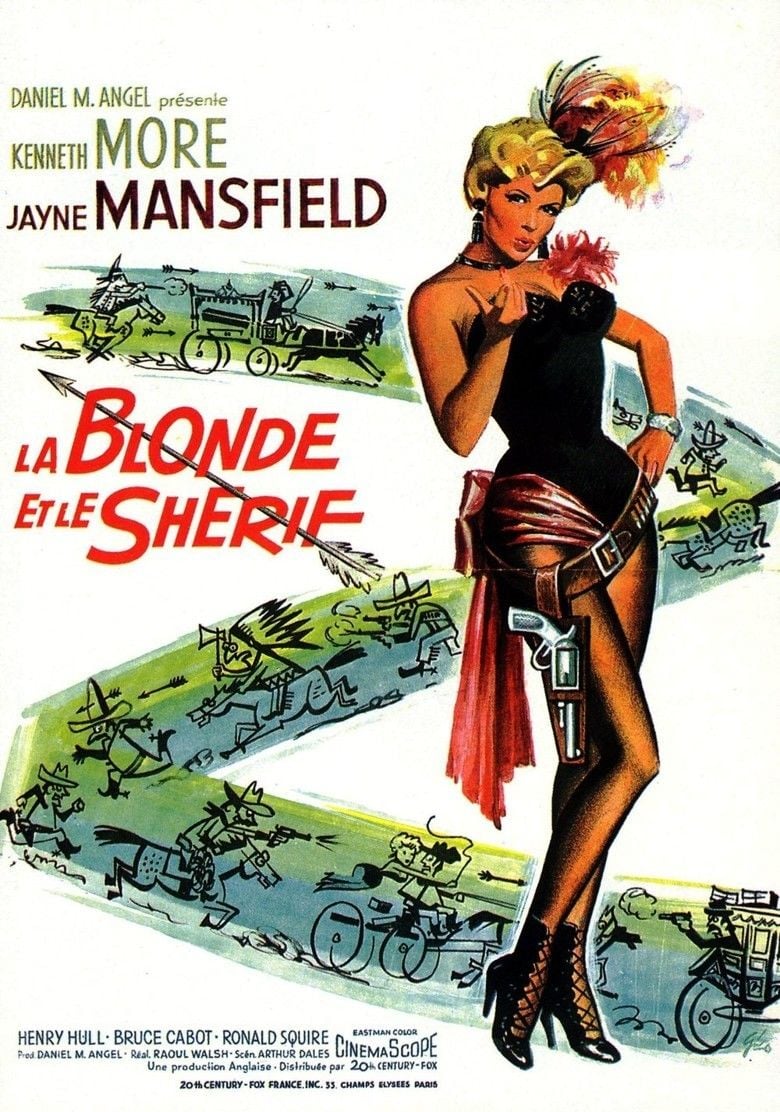 | ||||||||||||||||||||||||||||||||||
Release date December, 1958 (UK)March 14, 1959 (New York City) Based on The Sheriff of Fractured Jaw1954 Macleans Magazine by Jacob Hay Writer Howard Dimsdale (screenplay), Jacob Hay (short story) Cast (Jonathan Tibbs), (Kate), (Major Masters), (Jack), William Campbell (Keeno), (The Drunk)Similar movies Just Go With It , The Mechanic , Northwest Passage , Desert Kickboxer , Five Bloody Graves , Scalps, Venganza India | ||||||||||||||||||||||||||||||||||
The sheriff of fractured jaw trailer
The Sheriff of Fractured Jaw (also known as La Bionda e Lo Sceriffo/The Blonde and the Sheriff) is a 1958 British/American CinemaScope Western comedy film directed by Raoul Walsh, starring Kenneth More and Jayne Mansfield. Mansfield's singing voice is dubbed by Connie Francis. It was one of the first Westerns to be shot in Spain.
Contents
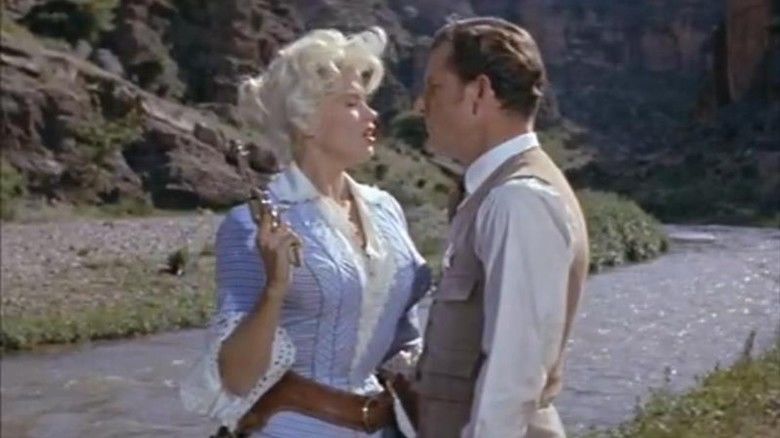
Plot summary
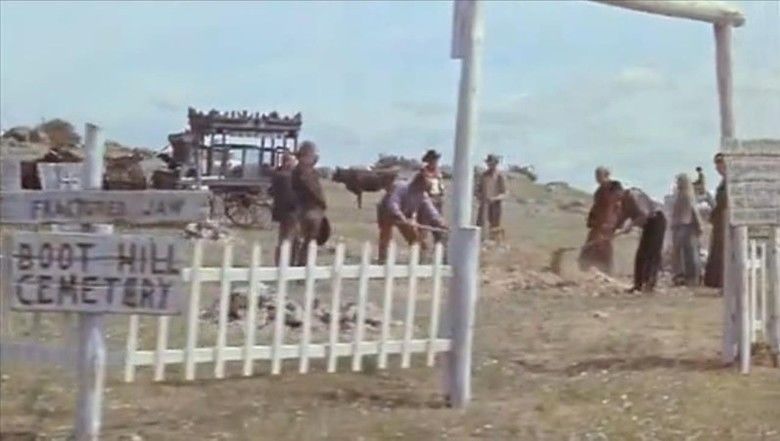
Jonathon Tibbs (Kenneth More), son of a family of English gunsmiths, has no interest in the business and prefers inventing gadgets, in particular a steam-powered horseless carriage. Threatened with disinheritance if he does not report for work, he discovers that the company is not doing very well, and concludes that someone must expand their sales.
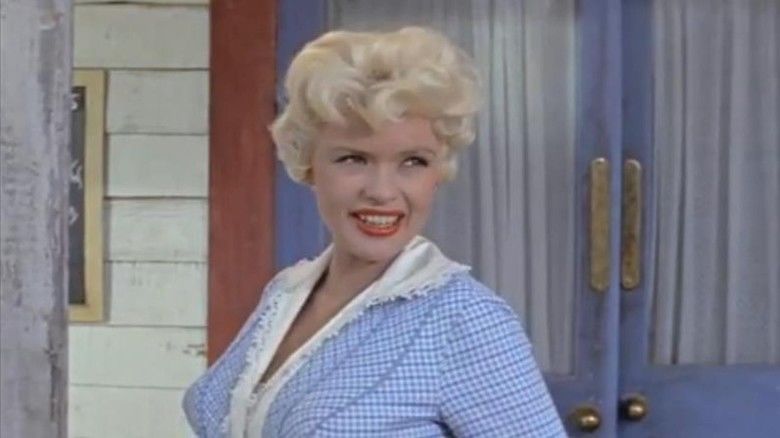
He reads in his newspaper about the wide use of guns in the American West of the 1880s, and decides to go there himself to sell firearms to the locals.
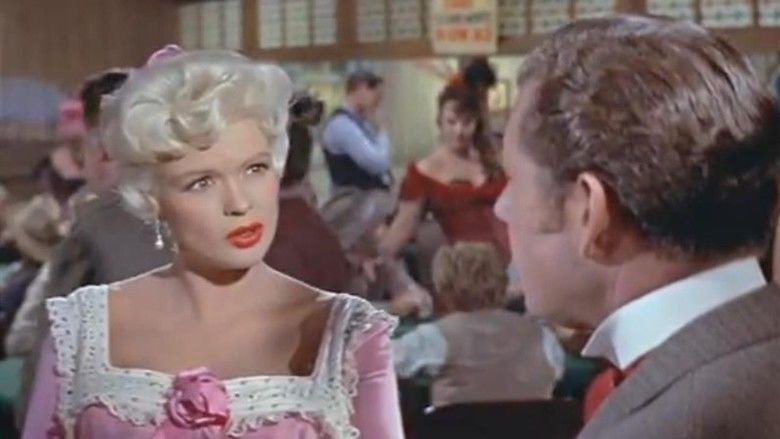
He ends up at the small lawless town of Fractured Jaw and inadvertently acquires a reputation for quickness on the draw, due to his wrist-mounted Derringer style weapon. He is innocently drawn into a range war between the "Box T" and "Lazy S" cattle outfits, both of whom claim sole water rights and, when he proves able to stand up to their hired gunmen, is appointed sheriff.
He endeavours to clean up the town using what skills he has, and by multilateral diplomacy. He attracts the support of Miss Kate (Jayne Mansfield), a blonde bombshell hotel owner, who helps him to fight off the hired guns of both cattle ranches, who all want him dead.
Earning the respect of the local Indian tribe, he becomes a blood brother of theirs, under the name of 'Fleet Iron Hat'. When he and Kate are besieged by the gunmen of both outfits, they come to his rescue and help to arrest the men. The two ranch owners eventually offer a deal to maintain the peace and share the water rights.
With relative peace restored, Jonathon decides to remain in Fractured Jaw, becomes an American citizen and marries Kate.
Cast
Production
The film was based on a short story by Jacob Hays published in the Canadian magazine 'Maclaines' in June 1954. Prior to publication, the film rights were bought by 20th Century Fox in 1954 as a possible vehicle for Clifton Webb. That film was never made.
Four years later, director Raoul Walsh decided to bring it to the screen in 1958. At the time, the television landscape was filled with more than twenty hours of Westerns per week, and Walsh felt that a spoof of the genre would be a good choice for the studio, especially with the new CinemaScope process to properly display the desolate background of a lawless town in the American West.
Fox decided to make the film and decided to give Walsh majority of the control over the movie's production. The studio still wanted Clifton Webb to play Jonathan Tibbs, the lead character, but Walsh preferred British actor Kenneth More. Moore had become popular in films such as Genevieve (1953) and The Admirable Crichton (1957), and Walsh felt he would be better-suited for the role.
It was More's first American film, although he had co-starred with American Betsy Drake in his previous movie. "I feel like I'm taking first steps towards Hollywood," he said at the time.
The film was the first of a three-picture deal between 20th Century Fox and producer Daniel Angel.
Walsh's first and only choice for the part of Kate, a saloon owner and singer, was blonde bombshell Jayne Mansfield. Mansfield had been discovered playing in the Broadway comedy Will Success Spoil Rock Hunter? in 1955, and she was signed to an exclusive contract with Fox in 1956 at a $2500-a-week salary. The studio intended to mold her as a successor to the temperamental Marilyn Monroe, and cast her in Monroe-type roles in The Girl Can't Help It (1956) and a 1957 film adaptation of her Broadway triumph. Walsh felt Mansfield offered the precise mixture of humor and sexuality to bring the character to life, and she was signed on the film in early 1958, not long after marrying her second husband, muscleman Mickey Hargitay.
Shooting
The Sheriff of Fractured Jaw started filming at Pinewood Studios in England, shooting the interiors and the prologue, which is set in London. The studio's massive inventory of sets, carriages, and period props made setting the film in the mid-1800s American West easily possible.
Then, the production moved to a remote location in the Spanish province of Aragon, the first time a Western film was made in the country. Walsh called on several actors he had previously worked with to fill out the cast: Henry Hull and Bruce Cabot.
During production, Mansfield became pregnant with her second child and often missed filming days, delaying production, and upsetting Fox executives. The film was completed on time and on budget, however. It was released in the United Kingdom in December 1958, but it was not released in the United States until March 14, 1959.
Reception
The Sheriff of Fractured Jaw received mixed reviews at the time of its release. It was considerably better received, both critically and financially, in England than in America. American critics gave negative reviews to Mansfield's musical performances in the film, claiming her voiced was noticeably dubbed. In fact, her voice was dubbed by singer-actress Connie Francis.
Box office
The film was the tenth most-popular movie at the British box office in 1958. It made $1,924,875 in American theaters and $2,485,125 elsewhere.
References
The Sheriff of Fractured Jaw WikipediaThe Sheriff of Fractured Jaw IMDbThe Sheriff of Fractured Jaw themoviedb.org
